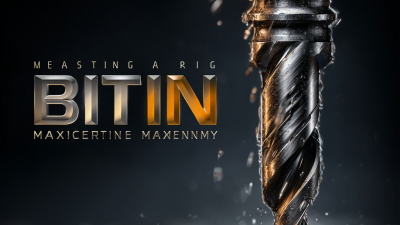Leave Your Message
 As the cryptocurrency landscape continues to evolve, the emergence of
ASIC miners has signified a
revolutionary shift in mining efficiency and profitability. ASIC, short for
Application-Specific Integrated Circuit, refers to hardware specifically
designed for the purpose of cryptocurrency mining. According to the Cambridge
Centre for Alternative Finance, Bitcoin’s hash rate has surged over
200% from 2019 to 2021,
underscoring the increasing demand for more powerful mining solutions.
As the cryptocurrency landscape continues to evolve, the emergence of
ASIC miners has signified a
revolutionary shift in mining efficiency and profitability. ASIC, short for
Application-Specific Integrated Circuit, refers to hardware specifically
designed for the purpose of cryptocurrency mining. According to the Cambridge
Centre for Alternative Finance, Bitcoin’s hash rate has surged over
200% from 2019 to 2021,
underscoring the increasing demand for more powerful mining solutions.
ASIC miners, with their unparalleled processing
capabilities, have dominated the mining market, accounting for over
90% of Bitcoin mining activities
as reported by the blockchain analytics firm, Blockchair. This remarkable efficiency
not only enhances the overall network security but also significantly reduces
energy consumption compared to
traditional GPU mining methods. As we delve deeper into the mechanics and advantages
of ASIC miners, it becomes clear that they
are not just a trend but a cornerstone of modern
cryptocurrency mining practices.
The evolution of cryptocurrency mining has been a fascinating journey, transitioning from the early days of CPU mining to the highly specialized ASIC (Application-Specific Integrated Circuit) miners we see today. Initially, miners relied on standard CPUs, which allowed anyone with a computer to participate in the mining process. However, as the difficulty of mining increased, this approach became less efficient, leading to a demand for more powerful solutions.
Enter the ASIC miner. These devices are designed specifically for mining cryptocurrencies, providing a significant boost in performance and energy efficiency. Unlike CPUs, which can perform a variety of tasks, ASIC miners are optimized for the hashing algorithms of specific cryptocurrencies, enabling miners to achieve higher hash rates with lower power consumption. This shift has revolutionized the mining landscape, making it possible for miners to generate profits in an increasingly competitive market.
Tip: When considering a mining operation, always assess the total cost of ownership for your hardware—this includes electricity costs, cooling solutions, and potential hardware upgrades.
Moreover, the transition to ASIC miners has led to increased centralization in the mining sector, as those who invest in high-performance equipment can dominate the mining process.
Tip: Stay informed about the latest mining technologies and trends, as they can greatly impact your mining strategy and profitability.
This chart illustrates the evolution of processing power in cryptocurrency mining, showcasing the significant leap from CPU mining through GPU and FPGA to the specialized ASIC miners. As seen, ASIC miners dominate the market with an immense processing capability of over 10,000 GH/s, marking a revolutionary change in the efficiency of cryptocurrency mining.
ASIC miners have fundamentally transformed the landscape of cryptocurrency mining by significantly boosting efficiency and enhancing hash rate performance. These specialized devices are designed specifically for mining operations, allowing miners to achieve unprecedented levels of computing power while minimizing energy consumption. Recent developments, particularly in the U.S., showcase the cutting-edge technology being introduced to the market, which aims to deliver high hash rates and lower costs per terahash, thereby revolutionizing profitability in the mining sector.

The emergence of advanced ASIC miners, capable of producing over 1.16 PH/s, has fueled a competitive arms race among manufacturers, driving innovation in mining technologies. As mining equipment evolves, notable shifts such as the transition from air cooling to water cooling systems demonstrate the industry's commitment to meeting growing computational demands while maintaining energy efficiency. This ongoing evolution underscores the importance of ASIC miners in enhancing the overall performance and viability of cryptocurrency mining operations, positioning them as a crucial component in the future of digital currency production.
ASIC (Application-Specific Integrated Circuit) miners are specifically designed hardware solutions that optimize the process of cryptocurrency mining. Unlike general-purpose hardware, ASIC miners are built for a single task, allowing them to perform complex calculations at unprecedented speeds and with greater energy efficiency. This specialization is a key feature that enables them to outpace traditional mining systems, dramatically decreasing the time and resources required to mine cryptocurrencies like Bitcoin.
The design of ASIC miners incorporates high-performance chips tailored to the hashing algorithms of specific cryptocurrencies. This focused design means they can solve cryptographic puzzles much faster than FPGAs or GPUs, leading to a significant increase in overall mining power. Furthermore, their compact and robust architecture reduces power consumption, making them a more economical choice for miners. With these features, ASIC miners have revolutionized the landscape of cryptocurrency mining, contributing to the increasing competitiveness and profitability of the industry while also raising discussions about the environmental impact and centralization concerns.
| Feature | Description | Benefits |
|---|---|---|
| Energy Efficiency | ASIC miners are designed to consume less power compared to traditional GPUs, providing higher hash rates per watt. | Lower electricity costs, which can lead to increased profitability in mining. |
| Hash Rate | ASIC miners offer significantly higher hash rates than other mining hardware. | Increased chances of successfully mining blocks and earning rewards. |
| Specialization | ASIC miners are built for specific hashing algorithms. | Optimized performance for particular cryptocurrencies, enhancing efficiency. |
| Compact Design | Many ASIC miners are designed to be compact and lightweight. | Easier setup and can fit into smaller spaces, making them ideal for home miners. |
| Cooling Solutions | Most ASIC miners come with advanced cooling systems to manage heat generation. | Allows for sustained performance without overheating, prolonging hardware life. |
ASIC miners, or Application-Specific Integrated Circuit miners, have significantly transformed the landscape of cryptocurrency mining, particularly in terms of cost efficiency. Unlike traditional mining hardware, which is designed for general-purpose computing, ASIC miners are engineered specifically for mining tasks. This specialization allows them to operate at a much higher efficiency, consuming less electricity and generating more hashing power per unit. Consequently, miners leveraging ASIC technology can significantly reduce their operational expenses, consequently lowering overall cryptocurrency mining costs.

The economic impact of ASIC miners extends beyond mere operational savings; it influences market dynamics and competition among miners. As more miners adopt ASIC technology, the increased hashing power in the network can lead to heightened difficulty levels in mining. This shift often forces traditional miners equipped with less efficient hardware to either upgrade or exit the market altogether. Hence, ASIC miners not only shape the cost structure for individual miners but also alter the competitive landscape of the cryptocurrency ecosystem, driving innovation and efficiency in the mining industry while challenging the viability of older technologies.
The evolution of ASIC mining technology has played a crucial role in the cryptocurrency landscape, particularly in response to the soaring prices of digital currencies like Bitcoin. As mining became a pivotal method for acquiring cryptocurrencies, the demand for more efficient and powerful mining hardware led to significant advancements in ASIC (Application-Specific Integrated Circuit) design. These specialized machines are optimized to perform specific tasks related to bitcoin mining, providing higher hash rates while consuming less energy than generic hardware.
Looking forward, the future of ASIC mining technology is poised for further innovation. Industry experts predict a trend toward greater integration of AI and machine learning to enhance mining efficiency and predictive maintenance. Additionally, as environmental concerns rise, manufacturers are likely to develop ASIC miners that are more energy-efficient, reducing their carbon footprint. This could involve the use of advanced cooling technologies and renewable energy sources, ensuring that ASIC mining remains not only profitable but also sustainable in the ever-evolving blockchain ecosystem.






